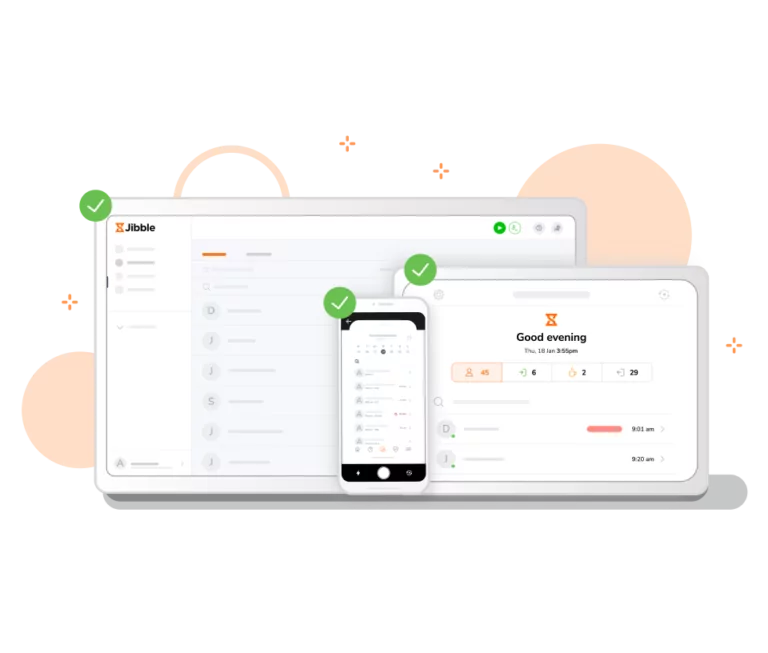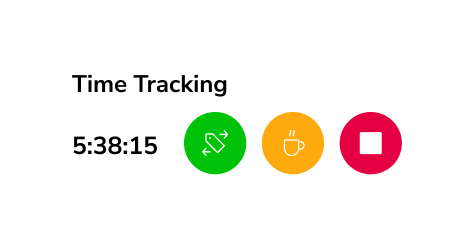
Photo by Mikael Blomkvist on Pexels
Background
A leading provider that specializes in AI-driven talent solutions and AGI-based software engineering services, with a network of millions of remote professionals.
The company combines AI product development and deployment services for businesses with transformative career opportunities to professionals.
These services include building AI and generative AI (genAI) products, training large language models (LLMs), and providing custom engineering solutions.
For confidentiality reasons, the company name is not disclosed.
Challenges with the Old System That Made the Company Change
The Company’s nature of work calls for the need to hire contractors based in different regions. Coupled with a range of other factors, this complexity gives rise to several significant challenges in managing attendance, including:
1# Scalability Issues:
As the company expanded, they quickly realized that the existing system wasn’t built to scale with them. The increase in contractors, projects, and team members exposed the limitations of the old system, which couldn’t handle the growing complexity. They needed a solution that could grow alongside them—able to handle more contractors, projects, and a wider range of tasks without breaking down or causing delays.
2# Inefficient Tracking Project Hours and Payroll:
The need to track time across multiple projects and seamlessly manage payroll was growing, but the old system just couldn’t keep up. The company realized that managing project hours and payroll manually was no longer sustainable. It was clunky, slow, and lacked the integration needed to track time on individual projects while also calculating payroll hours accurately. This created unnecessary friction between project management and payroll processing, leading to delays, confusion, and wasted time.
3# Regional Tracking Limitations:
With team members spread across different locations, managing time tracking became a logistical nightmare. The previous system lacked the key management tools needed to monitor teams effectively from afar, which made overseeing performance, ensuring accountability, and maintaining consistency across regions incredibly challenging.
4# Lack of One Centralized System:
The diversity of the company’s projects, each with its own set of contractors, regions, and timelines, presented a unique challenge. They needed a system that could bring everything together in one centralized platform, making it easier to track time, monitor progress, and ensure that everyone was on the same page. Without a centralized platform, the complexity of managing remote teams grew, and visibility into team activities was limited at best.
5# Inaccurate Reporting:
The lack of an automated system resulted in a lack of data for possible reflections on attendance patterns or tracked time. The reliance on spreadsheets and manual entry often led to difficulty in generating reliable project reports. Without accurate and real-time data, making informed decisions about project timelines, budgets, and resource allocation was nearly impossible, leaving the team scrambling to rectify mistakes and fill in the gaps.
The Company’s Time Tracking Key Requirements
The company had several critical requirements for a time tracking solution to address the complexities of its operations, ensuring seamless integration and operational efficiency. These key requirements included:
- Activity, Project, and Client Tracking – To ensure comprehensive control and visibility across all ongoing activities, projects, and client engagements.
- Group Management – To effectively manage various contractor groups spread across multiple regions, each with distinct needs and workflows.
- Exporting Timesheet Reports – To streamline payroll processing by accurately exporting timesheet data for efficient compensation management.
- Exporting Tracked Time Reports – To facilitate client invoicing by generating detailed reports of tracked hours, ensuring accuracy and transparency.
- API Integration – To automate the input of member codes for seamless workflow integration, with plans to expand automation capabilities for greater efficiency in the future.
How the Company Found Jibble
The Company found Jibble through online Google search, implementing a trial phase that took about 1 ½ months before deploying it for the organization.
Why the Company Chose Jibble Time Tracking
When it came time to find a solution to track the team’s time, Jibble stood out as the perfect fit. Here’s why the company decided to integrate it into their workflow:
1# Effortless Time Tracking Across Platforms:
In the fast-paced world of work, every second counts. Jibble’s time clock system offered a simple, intuitive experience that allowed the team to clock in and out quickly and seamlessly. Whether on desktop, mobile, or even through a kiosk, the members could log their hours in the way that worked best for them. No more fumbling with complicated systems—just swift, easy time tracking that kept everything on track.
2# Customizable Control Over Projects & Activities:
Confidentiality and data security are crucial in the company’s business, and Jibble’s project and activity visibility features gave them the exact level of control they needed. With the ability to tailor access for each team member, the company could protect sensitive client data while ensuring that everyone only saw the projects and activities they were assigned to. This not only kept the company’s workflow secure but also streamlined communication, preventing unnecessary clutter and confusion.
3# Deep, Flexible Reporting for Maximum Insight:
Tracking time is important, but understanding it is where the magic happens. Jibble’s reporting features provided the company with rich, detailed insights into how time was spent across the board. From raw timesheet data to customizable time entries, the reporting options allowed them to generate precise, tailored reports that helped them track productivity, identify trends, and optimize efficiency. Whether they were looking for a high-level overview or a granular breakdown of hours, Jibble gave the company the flexibility and transparency they needed to make data-driven decisions.
How Was the Onboarding Process?
Trial Phase and Customization:
To ensure Jibble was the right fit for the company’s needs, they initiated a focused trial phase lasting about six weeks. This pilot involved a small internal group of users, allowing them to test out the system in a real-world scenario. During this phase, the team quickly identified several key areas where customizations were essential to fine-tune their timesheet processes.
They were able to communicate these needs directly to the Jibble product manager, who was highly responsive. Within just a month, the customizations were successfully implemented, with the main focus on streamlining timesheet management to ensure a smoother, more efficient workflow for their team.
Seamless Onboarding Experience:
When it came time to fully onboard the team, the process was both thorough and efficient. The backend setup started with continuous imports of the company’s team members, ensuring that all user data was accurately transferred and ready for use. To ensure a smooth transition, the team organized dedicated training sessions for admins and managers, providing them with a deep understanding of the system’s capabilities and functionalities.
A collaborative meeting with the product manager helped them align on specific feature requests, ensuring that Jibble would cater perfectly to their needs. To keep communication flowing seamlessly during the transition, a dedicated Slack channel was set up, offering prioritized support and allowing their team to get quick responses to any questions or concerns that arose.
The Benefits Immediately Identified Post Onboarding
Following the onboarding process, the company quickly experienced several key benefits that significantly contributed to its sustainable improvement, including:
1. Self-Managed Timesheets: Jibble enabled employees to manage their own timesheets, giving them full control over entering, editing, and monitoring their hours without waiting for approvals. This streamlined the process and ensured accurate logging.
2. Increased Transparency for Clearer Insight: Jibble improved transparency by allowing employees to access and review their logged hours, fostering trust and helping them understand how their time impacted pay.
3. Reduced Pay-Related Queries: With real-time access to timesheets, employees could address discrepancies themselves, reducing pay-related queries and easing the payroll process.
4. Enhanced Accountability and Personal Responsibility: The system encouraged employees to take ownership of their hours, promoting a culture of accountability and ensuring greater accuracy in time tracking.
Main Method of Jibbling In and Out
The key methods for clocking in for the Company is through:
Web App: While the majority of users primarily rely on the Jibble Web App for clocking in and out, the organization has adopted a flexible approach by enabling employees to use any of the available channels—whether Mobile, Desktop, or Kiosk. This ensures that team members can track their time seamlessly, regardless of their preferred device or location, providing greater convenience and adaptability to diverse work environments.



